#glenligon
Photo
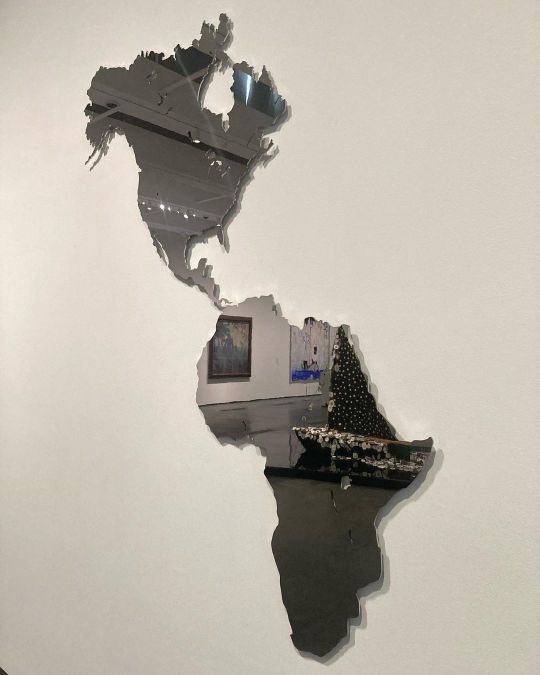
Afro-Atlantic Histories charts the transatlantic slave trade and its legacies in the African diaspora. Through a series of dialogues across time, the exhibition features artworks produced in Africa, Europe, and the Americas in the last four centuries to reexamine—from a global perspective—histories and stories of enslavement, resilience, and the struggle for liberation. The exhibition is organized around six groupings: Maps and Margins, Enslavements and Emancipations, Everyday Lives, Rites and Rhythms, Portraits, and Resistances and Activism. Each section considers the critical impact of the African diaspora reflected in historic and contemporary artworks. Histórias Afro-Atlânticas originated at the Museu de Arte de São Paulo Assis Chateaubriand (MASP) and the Instituto Tomie Ohtake in Brazil, in 2018. Touring venues in the U.S. include the Museum of Fine Arts, Houston, the National Gallery of Art, and the Dallas Museum of Art. This is the only presentation on the West Coast. #hankwillisthomas #betyesaar #faithringgold #glenligon #bennyandrews #jammieholmes #romairebearden (at LACMA Los Angeles County Museum of Art) https://www.instagram.com/p/Cp1PxNBrkFf2tWB-vsbrF9yd84jcirkCsEFcNM0/?igshid=NGJjMDIxMWI=
4 notes
·
View notes
Photo

#GlenLigon, Hands, 1996 // What do you see? // #inspiration #blackandwhite #photography #hands #music #concert #community
0 notes
Video
“I feel most colored when I am thrown against a sharp white background” ZNH #GlenLigon (at The Broad Museum At Downtown Los Angeles)
2 notes
·
View notes
Text
Art Scavenger Hunt!
Glen Ligon’s “For Comrades & Lovers”, 2015 brings the introduction to Walt Whitman’s seminal Leaves of Grass vibrantly to life with neon sculpture. The way the literal poetic lines trace the lines of the buildings architectural lines is aesthetically pleasing, and in a sense underlines the existing interior and building design.
The choice of the color purple, and the tone of the shade used, brings to mind the association of the color with the emotion of love. Purple combines the calm stability of blue with the vibrant energy of red. Purple is also associated with royalty.
The use of neon as Ligon’s artistic medium in this sculptural installation feel fitting and intentional, The bright, illuminating light is used to illustrate and bring to life the words of Walt Whitman’s, via the introduction to his most well-known work, published in 1855. The use of neon, communicates and emboldens the “electric” power of Whitman’s words and translates them into the modern era.
The piece is described as uniting political and poetic discourse - often seen as separate- in a common space at The New School. The idea that poetry can itself be political, and art can be revolutionary, is paramount to the history and legacy of The New School. Igniting and enlivening intellectual, artistic, and political discussion in a common space at the school - inviting revolution - is the intention behind the choice of the words depicted.
Glen Ligon was considered an “identity artist” with his exploration of race in America being one of his central themes in his early work. Whitman’s work speaks very directly to the reader as an individual, addressing a potential kindred spirit, an audience who he knows someday will related deeply to his words. I think that this speaks to the idea of identity on a core level - artists recognized other artists.
The way that the poetry is elevated, and ascends diagonally into the space of the building, gives the words a soaring. lofty, exulted home. The diagonal lines cutting across the space also give the sculpture itself a sense of movement which emphasizes the energy and active energy of the poetry itself. The straight , long lines on which the rounded letters sit, in conjunction with the even spacing and beautiful symmetry of their being two lines of poetry (one above the other) give it a very pleasing, even, and balanced design. Although there are “starting points” in the poetry, indicated by subtle dashes, the poem could be conceptualized as a never-ending merry-go round of words, spinning around the audience. The positioning of the letters in 360 degrees, around the reader, gives the audience a completely different experience than if they were to read the words on the page.
Ligon uses neon to highlight the choices of the architectural design by literally drawing, designing lines of text with light.
Embodying the concepts in the poem, the neon installation brings the power of one of the most influential poets in American history into the space and invites political discussion, connection between artists, and inspiration to a communal area - notably one with a stage in it as well. The sculpture does not disturb the stage, and would not necessarily be an interruption to a performance, but instead reads as a banner or marquee above the stage. Interestingly, the stage wall is the only one that exhibits an excerpt of the written work which can be read entirely as its own poem.
The choice of the artist to hint at starting and stopping points in the work with small dashes allowed him to manipulate the poetry - i.e. where you start and stop reading influences your experience of the words, so Ligon is using creative editing to shape the words and presentation of Whitmans poetry in his own way.
With all of his work, Whitman reached through time from his day in the 1850′s to an imagined, hypothetical, reader in the future with whom he knew his poetry would strike a chord. In his famous work Crossing Brooklyn Ferry, he also does this, speaking to a future ferry rider, commiserating through the poetry about their shared, parallel commute experience crossing the river (a metaphor perhaps in itself?) in a love letter to the reader across time. This is done exquisitely well in the introduction to Leaves of Grass, where he speaks directly to artists, mystics, rebels, and philosophers, who he knows will savor his words someday as they ring true to them as kindred creative souls. This direct reach into the future, into the readers heart, is one of the things that is so powerful and rattling about Whitman’s work. It grabs the reader who relates - as does Ligon’s work as an “identity” artist.
Interpretation of “For Comrades & Lovers” by other New School students:
“I feel like I'm talking to someone and someone is comforting me - any place, any time. Because any time that I see this piece, it’s from a different perspective.”
-Valerie
“It guides your gaze downwards, [when you’re looking from above on the ground floor) It (the sculpture], and brings attention to the space. It doesn’t distract from the stage.”
-Yichan
“I thought it was interesting that from a human perspective, you have to move physically to read it. Even from a camera, you would have to turn 360. Poetry can be tough because you have to read it and go back, and re-read it. Specially, it’s very interesting - having to turn and the way it’s floating above us - and when you turn out the lights it’s a different experience.”
-Jordan

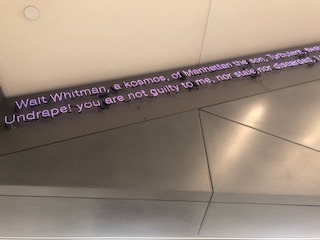



Is there a core idea or question?
Yes, I would say it is how best to communicate the words and concepts introduced by Walt Whitman to a modern student body, one with a very specific identity.
What role does the title play in shaping this?
The choice words excerpted from the poem, “For Comrades & Lovers”, is used as the title of the piece. The comrades and lovers addressed in the poem are the intended audience, those who's artistic and political spirit mirrors that of Whitman - as he is seeking an empathetic listener, and knows that he will reach a kindred spirit who will be touched intimately by his poetry because it so resonates with them. By using the words “comrades & lovers”, to whom Whitman is speaking directly, as the title immediately and powerfully implements the core goal of delivering his ideas to a modern student body.
What is the artist trying to convey?
The artist wants to address the reader/audience, and allow the reader to be touched and receive the message of the poetry in tandem with the expression of the sculpture/installation work.
I thought it was interesting to learn that:
During his talk at the 2015 unveiling of the installation at The New School, Ligon emphasized Whitman’s ability to express a thing without calling it by name - of expressing the core of an idea in a way that goes beyond words. He said, “It seems like an impossible task, but I think Leaves of Grass is able to express impossible things like love, intimacy, the body and the soul,” Ligon said. “In a place like the Events Café, where people meet and greet and hang out, I think it’s fitting to have these words hovering in the air.”
Top Line of North Wall
Dead poets, philosophs, priests,
Martyrs, artists, inventors, governments long since, Language-shapers,
on other shores,
Nations once powerful, now reduced, withdrawn, or desolate,
I dare not proceed till I respectfully credit what you have left
wafted hither,
I have perused it, own it is admirable, (moving awhile among it,)
Think nothing can ever be greater, nothing can ever deserve more
than it deserves,
Regarding it all intently a long while, then dismissing it, I stand in my place with my own day here.
Top Line of East Wall, Then South, Then West Walls
Walt Whitman, a kosmos, of Manhattan the son,
Turbulent, fleshy, sensual, eating, drinking and breeding,
No sentimentalist, no stander above men and women or apart from them, No more modest than immodest.
No labor-saving machine,
Nor discovery have I made,
Nor will I be able to leave behind me any wealthy bequest to found
a hospital or library,
Nor reminiscence of any deed of courage for America,
Nor literary success nor intellect, nor book for the book-shelf,
But a few carols vibrating through the air I leave,
For comrades and lovers.
Among the men and women, the multitude,
I perceive one picking me out by secret and divine signs, Acknowledging none else, not parent, wife, husband, brother, child, any nearer than I am,
Some are baffled, but that one is not—that one knows me.
Ah, lover and perfect equal,
I meant that you should discover me so by my faint indirections, And I, when I meet you, mean to discover you by the like in you.
Bottom Line of East Wall, Then South, Then West Walls
Undrape! you are not guilty to me, nor stale nor discarded,
I see through the broadcloth and gingham whether or no,
And am around, tenacious, acquisitive, tireless, and cannot be shaken away. I am the poet of the Body and I am the poet of the Soul.
The pleasures of heaven are with me and the pains of hell are with me,
The first I graft and increase upon myself, the latter I translate into
a new tongue.
There was never any more inception than there is now,
Nor any more youth or age than there is now,
And will never be any more perfection than there is now,
Nor any more heaven or hell than there is now.
The smoke of my own breath,
Echoes, ripples, buzz’d whispers, love-root, silk-thread,
crotch and vine,
My respiration and inspiration, the beating of my heart, the passing
of blood and air through my lungs,
Through me forbidden voices,
Voice of sexes and lusts, voices veil’d and I remove the veil,
Voices indecent by me clarified and transfigur’d.
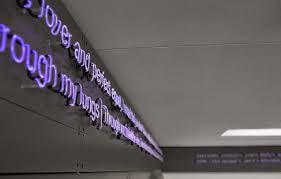



0 notes
Photo
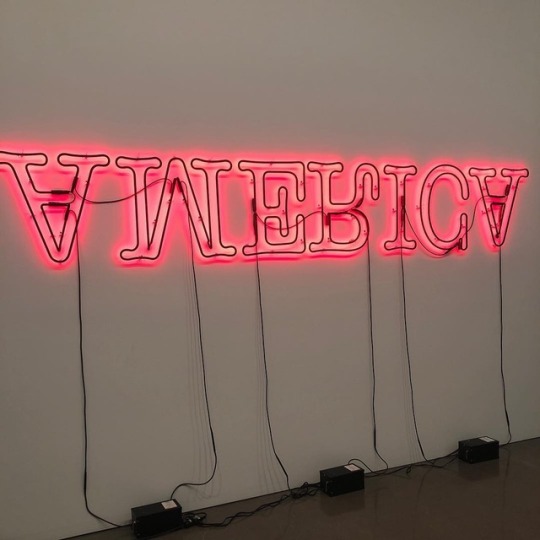
#∀WƎɹIƆ∀ #upsidedown#glenligon
78 notes
·
View notes
Photo
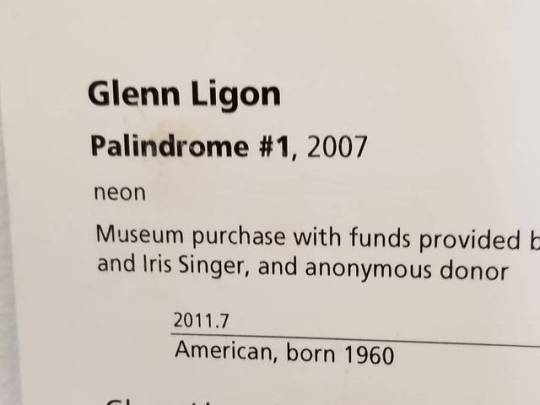
Phoenix Art Museum. (c)waynemichaelreich.com #neon #art #sculpture #glenligon #phoenixartmuseum
0 notes
Photo

Glen Ligon. Double America 2. The Broad. #carmonaphotography #glenligon #america2 #thebroad #losangeles #losangelesstyle #losangelesart #losangelescalifornia #art #artphoto #artphotography #artphotographer #artphotos #popart #popartist #photography #photographer #photoshoot #photooftheday #photographyoftheday #photographerslife #photographyeveryday #sign #neonsign #heresyoursign #postwarart #labordayweekend (at The Broad)
#photographerslife#thebroad#america2#popart#neonsign#artphotos#photographyoftheday#photographyeveryday#artphotography#photoshoot#sign#artphotographer#losangelescalifornia#losangelesart#losangeles#glenligon#art#popartist#losangelesstyle#postwarart#photographer#photography#heresyoursign#photooftheday#labordayweekend#carmonaphotography#artphoto
0 notes
Photo
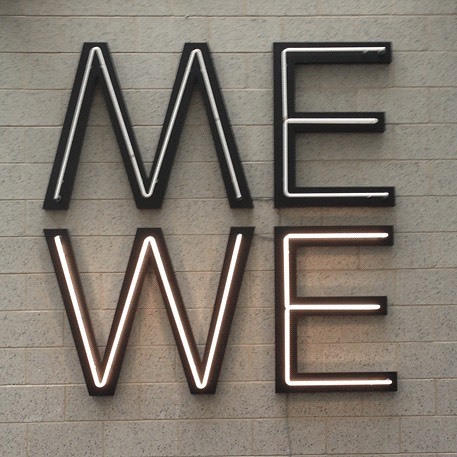
Glen Ligon NY ‘Give us a poem’ (palindrome #2) ✌🏼 #art #lighting #installation #newyork #glenligon
0 notes
Photo

#MEWE ...A Sculpture by #BronxArtist #GlenLigon ...A Poem by #The Greatest #MohammadAli ...Seen at @studiomuseum in #Harlem 👑👊🏽👑👊🏽👑👊🏽
1 note
·
View note